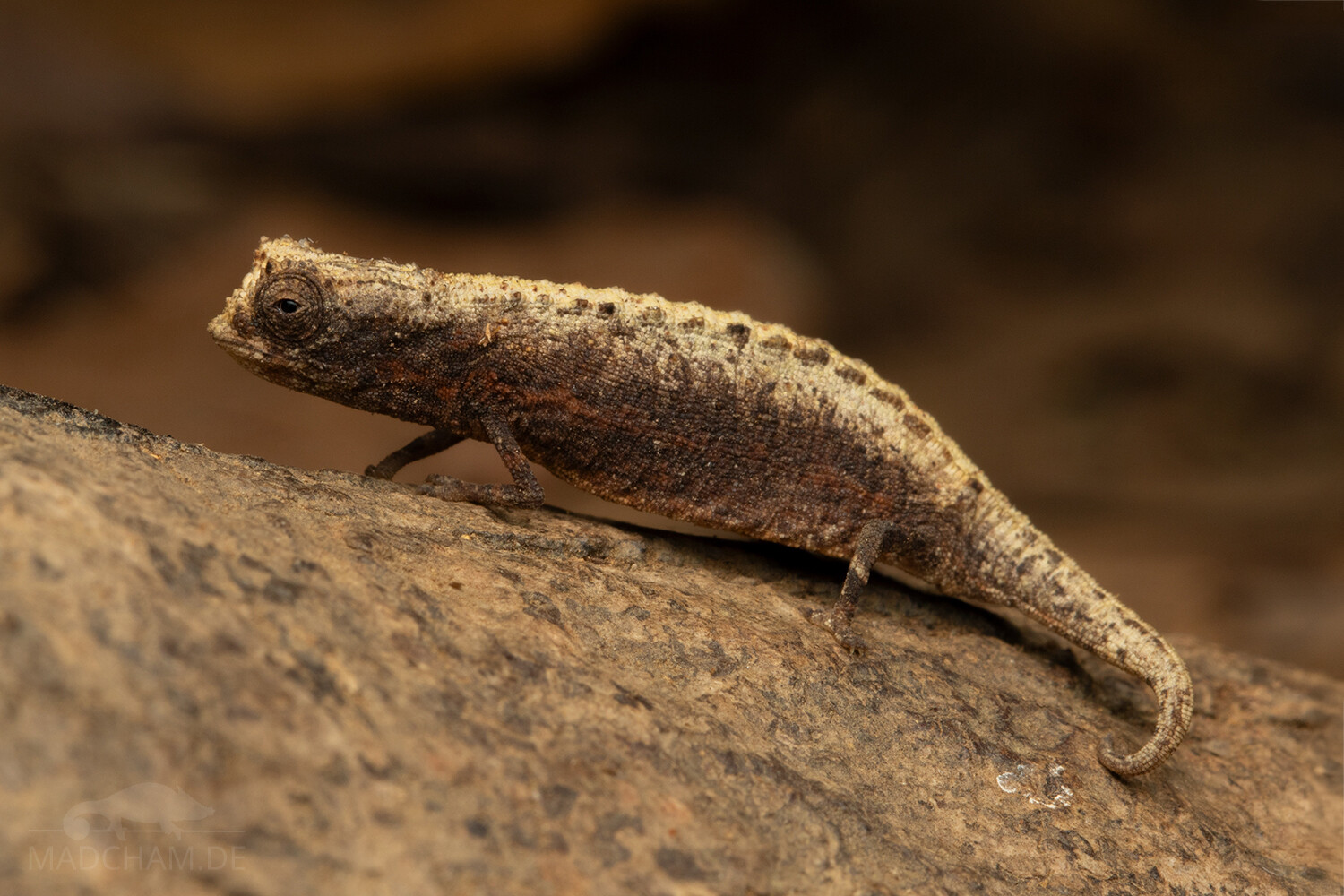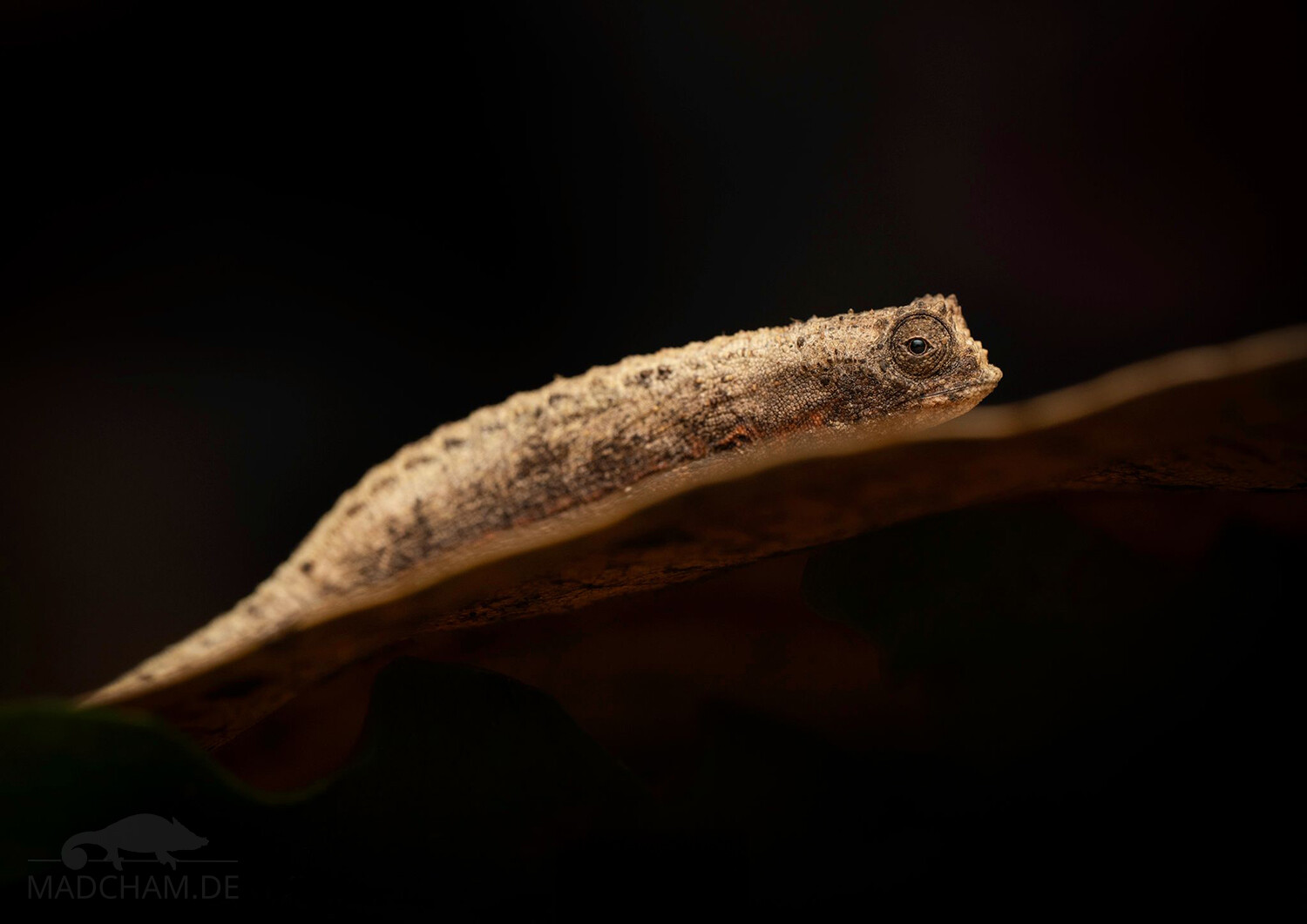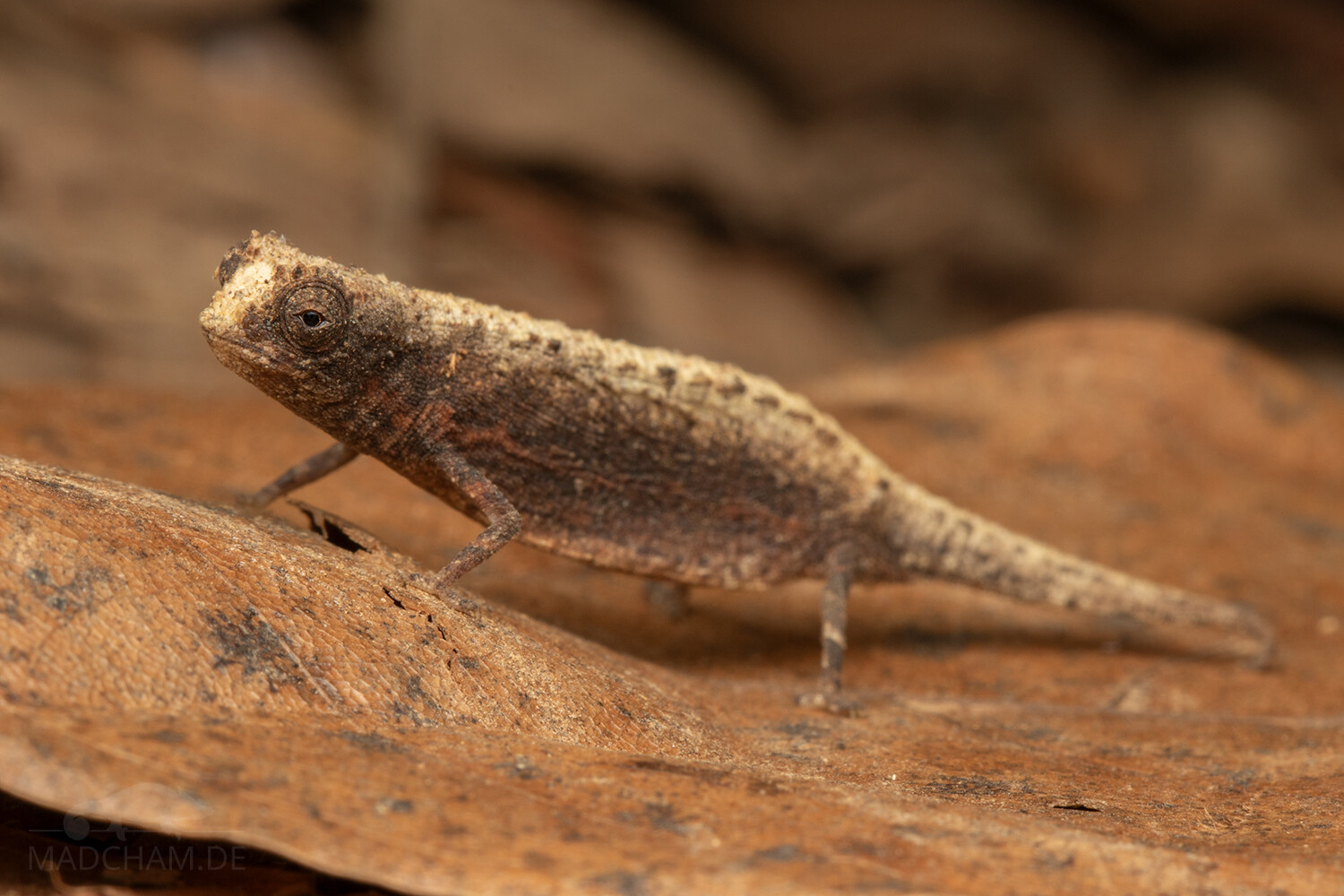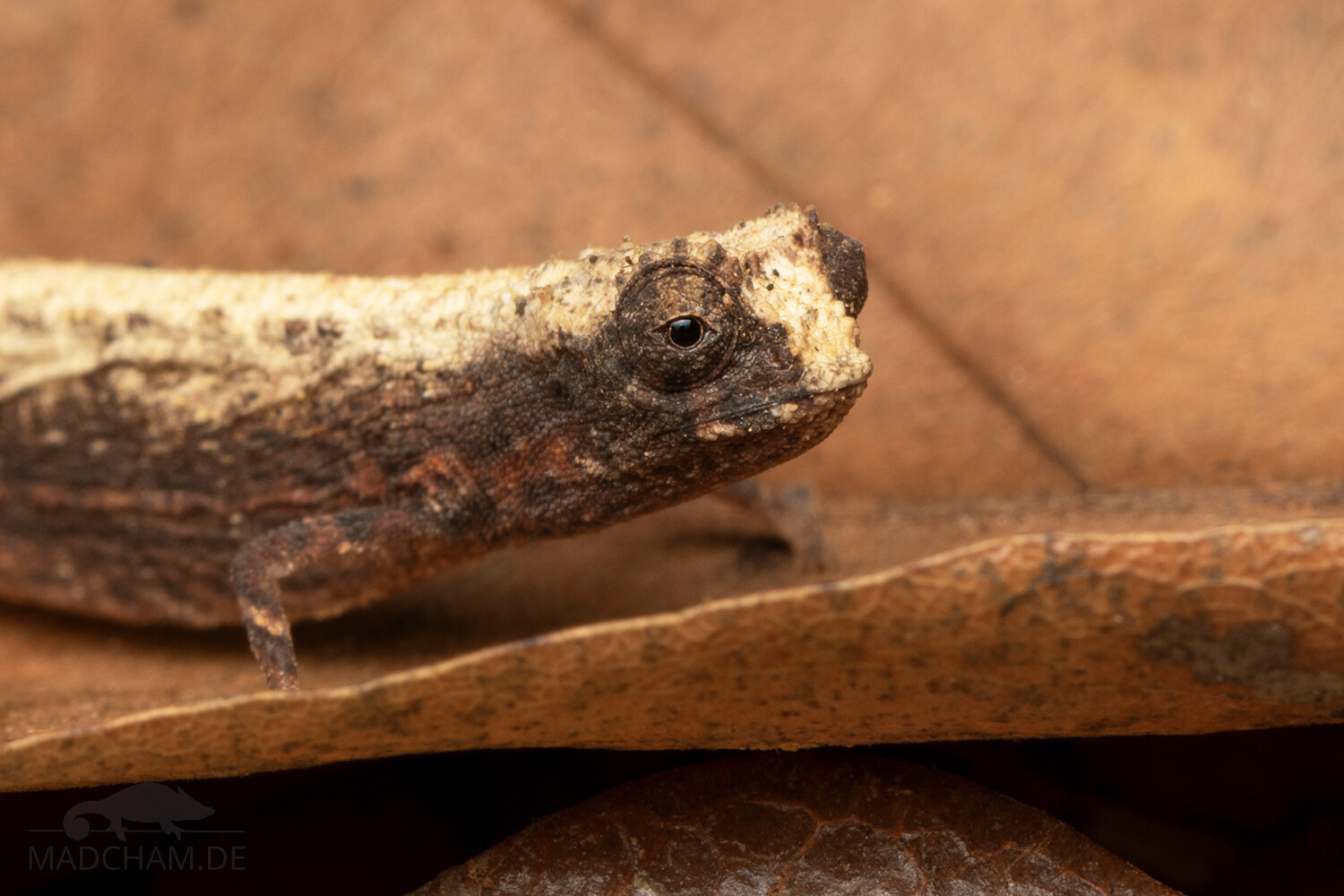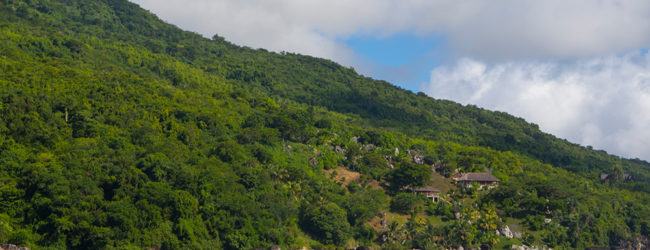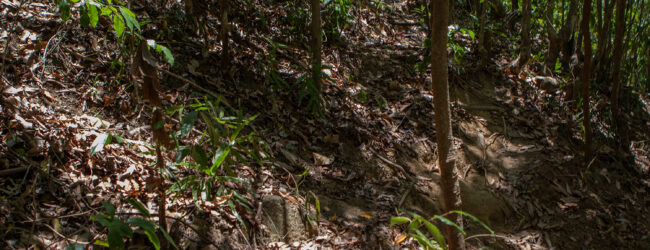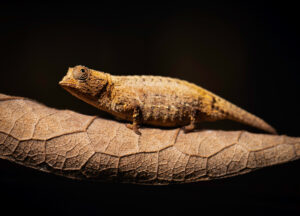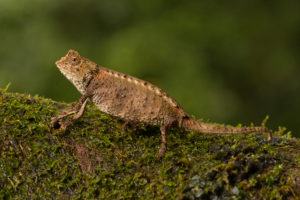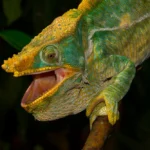No legal export possible
2014–2016: 150 animals approved for export each year
First description: 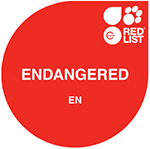
Origin of the species name:
Palaeontologist Oskar Böttger, then curator of the Senckenberg Museum in Frankfurt am Main (Germany), named this chameleon species after its body size. Minima is Latin and means ‘the smallest’. At the time of its description, it was indeed the smallest known chameleon. It was not until over a hundred years later that two even smaller ground chameleons were discovered in Madagascar. Böttger had already received the dead specimens he described from Carl Ebenau and Anton Stumpff in 1880. Stumpff and Ebenau, general representatives of the German East African Society, travelled extensively in the 1880s, particularly on the island of Nosy Be in Madagascar. Both collected numerous chameleons and sent them to Germany.
Distribution:
Brookesia minima is mainly found on the island of Nosy Be. The island of Nosy Be (which simply means ‘big island’) is located in the north-west of Madagascar in the Diana region. It covers an area of around 312 km² and has a population of over 45,000, most of whom live in the island’s largest town, Andoany (called Hellville in French), and make their living from fishing and tourism. Nosy Be is probably Madagascar’s best-known holiday resort, with Italians in particular flocking here in large numbers. Nosy Be has a small national park called Lokobe, which covers only 7.4 km² of the island, and a small reserve of the same name. Otherwise, Nosy Be lives mainly from its many beautiful beaches. The rest of the island consists mainly of secondary vegetation and countless ylang-ylang plantations.
Unlike all other Evoluticauda species (very small Brookesia species), Brookesia minima also occurs on another neighbouring island called Nosy Komba. The former volcanic island is actually called Nosy Ambariovato, but because of the tame lemurs that live there, it has been called Nosy Komba (akomba is Malagasy for lemur) for years. The island is almost circular and has a diameter of about eight kilometres. Nosy Komba is relatively well developed for tourism due to its proximity to Nosy Be. The largest village on the island, Ampangorina, lives from its small harbour and the countless souvenir shops, which make up almost half of the huts. There is also protected forest on Nosy Komba, but it only covers an area of 0.6 km².
Brookesia minima lives on both islands exclusively in the very small remnants of rainforest and dry forest, or at least on the edges of forests. It prefers deep foliage and can be found sleeping at night on thin plant parts, twigs and grasses just above the ground. It has not yet been discovered in secondary vegetation or plantations.
Appearance & size:
With a total length of 24.9 to 33.8 mm, Brookesia minima is still one of the smallest chameleons in the world today. It is currently the third smallest chameleon after Brookesia micra and Brookesia nana. Together with other, only slightly larger tiny species such as Brookesia tuberculata, it belongs to the minima group named after it. Both sexes of Brookesia minima are quite inconspicuous. They do not have enlarged tubercles above their eyes, and although there are usually six longitudinal lines on the back of their heads when viewed from above, these are irregular and do not form a consistent pattern as in other Brookesia species. Compared to similar species, Brookesia minima appear quite slender with strikingly thin, short arms and legs. Brookesia minima has wavy tubercles on both sides of its back. Both sexes are brown to beige in colour. Many of the small ground chameleons have a darker stripe on their sides. Often, a two-part colouring can be observed, with the upper half of the body on the head, back and tail being lighter than the belly, eyes and gular sac.
| Jan | Feb | Mär | Apr | Mai | Jun | Jul | Aug | Sep | Okt | Nov | Dez | |
| Durchschnittl. Temperatur | 27 | 27 | 27 | 26 | 25 | 24 | 24 | 25 | 25 | 26 | 27 | 27 |
| Minimale Temperatur | 23 | 23 | 24 | 23 | 22 | 20 | 20 | 19 | 20 | 22 | 23 | 23 |
| Maximale Temperatur | 31 | 31 | 31 | 31 | 31 | 29 | 29 | 29 | 30 | 31 | 31 | 31 |
| Regentage | 21 | 19 | 17 | 12 | 8 | 8 | 8 | 8 | 7 | 8 | 11 | 17 |
Die angegebenen Daten wurden von uns innerhalb mehrerer Jahre mit Thermo- und Hygrometern direkt an den Fundorten der Tiere gemessen und zusammengetragen. "Durchschnittliche Temperatur" bedeutet, dass die Werte eines gesamten Monats zu einem Durchschnittswert berechnet wurden, z.B. wurden alle gemessenen Minimalwerte eines Monats zu einem durchschnittlichen Minimalwert für Februar berechnet. Das bedeutet im Klartext, dass einzelne Spitzenwerte eines Tages deutlich höher oder niedriger als die durchschnittlichen Minimal- und Maximalwerte liegen können. Es ist also möglich, dass zwar das durchschnittliche Maximum bei 29 Grad liegt, es aber an einigen Tagen des Monats 33°C oder gar 35°C warm war.
Das Klima auf den Inseln vor Madagaskars Nordwestküste ist ganzjährig sehr warm. Temperaturen über 30°C kommen regelmäßig vor. Nachts fallen die Temperaturen in der Regenzeit nur knapp unter 25°C, während der Trockenzeit deutlich tiefer bis 19°C.
Während der Regenzeit regnet es sehr ergiebig und viel. Von April bis Oktober bleibt es weitestgehend trocken und sonnig auf den Inseln, regnet aber ab und zu trotzdem noch. Dadurch wird es nie völlig trocken auf den Inseln.
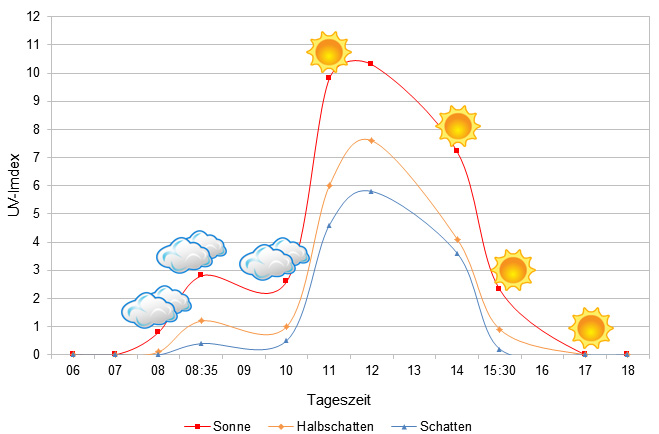
Die UVB-Daten wurden mit einem Solarmeter 6.5 im Frühjahr (Anfang April) zur höchsten Aktivitätszeit der Chamäleons gemessen. Gemessen wurden jeweils maximal für das Chamäleon zu erreichende Werte im Habitat.
Habitat:
The following photos show excerpts from the habitat of Brookesia minima at the end of the dry season in the Lokobe Reserve and in the national park of the same name on Nosy Be during the rainy season. The species can cope with surprisingly dry conditions at times, even though the microhabitat in thick layers of foliage certainly remains somewhat moister than the surrounding area during the dry season. The rainforest of Lokobe is very rocky and has very moist soil, while the dry forest of the reserve of the same name has rather sandy-loamy soil.

